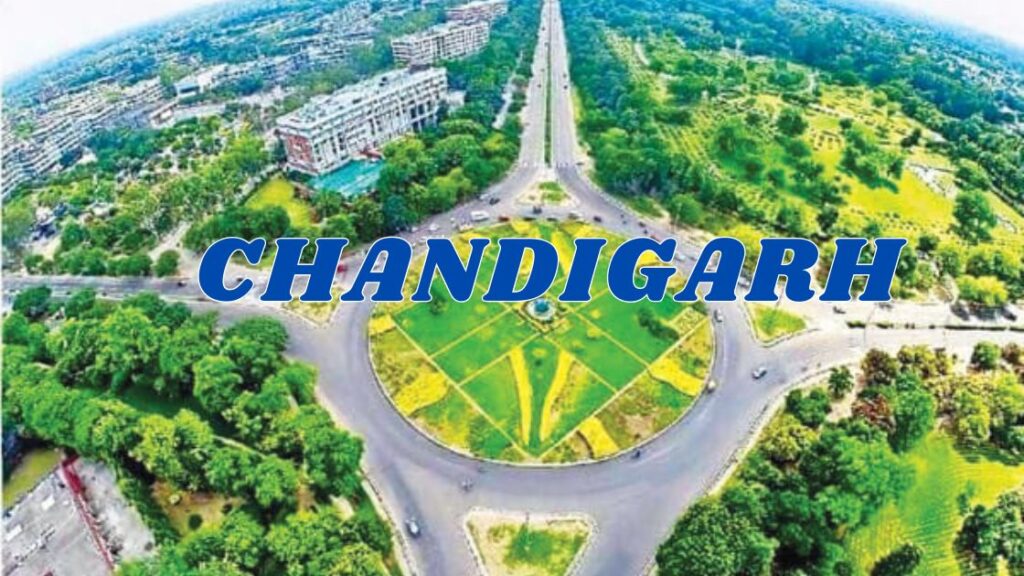All about Dibrugarh
Dibrugarh, located in the northeastern region of Assam, India, is a city rich in history, culture, and economic importance. Set within a lush valley along the Brahmaputra River, Dibrugarh has emerged as a vital commercial center in the northeastern part of the country. Known as the “Tea City of India,” this city plays an influential role in not only India’s economy but also the global tea industry.
Dibrugarh: The Enchanting Tea City of India
As the largest urban center in the upper Assam region, Dibrugarh is often seen as the gateway to northeastern India. It offers a combination of natural beauty, rich culture, and thriving industries that contribute greatly to the state’s growth. The presence of various tea estates and natural resources makes Dibrugarh both a sought-after destination for tea enthusiasts and an essential player in the economy of Assam.
Land and Geographical
Assam, a state located in the northeastern part of India, is characterized by its diverse landforms and unique geographical features. The state, shaped roughly like a Y on its side, consists of three primary physical regions: the Brahmaputra River valley in the north, the Barak River valley in the south, and the hilly region lying between Meghalaya, Nagaland, and Manipur to the west and east. Each of these regions carries a unique topographical identity, contributing significantly to Dibrugarh ecological richness and agricultural prominence.

The Brahmaputra River valley, stretching for nearly 450 miles (725 km), is by far the most expansive region within Assam. This area runs westward from its entry point near Sadiya, located at the northeastern extremity of Assam, and then moves southward to converge with the plains of Bangladesh. The valley is narrow in most parts, not exceeding 50 miles (80 km) in width, and is surrounded by mountains, with isolated hills and ridges scattered across the region.
These abrupt land formations rise sharply from the plains and enhance the picturesque landscape. The Brahmaputra River, believed in Hindu mythology to have emerged from the Brahmakund pool in Arunachal Pradesh as the son of the god Brahma, plays a pivotal role in shaping both the culture and geography of the state. The river also feeds into many streams and rivulets that descend from the nearby hills, making the valley an abundant source of water and fertile soil.
Physical Features and Geological Significance
Geologically speaking, the region is formed largely from ancient alluvial deposits, a mixture of sandstone, coal seams, shales, and various other sedimentary layers from the Neogene and Paleogene periods. The area thus harbors layers of geological history, with rock formations that date back more than 65 million years. This rich geology supports the thriving agricultural industry of Assam, primarily tea cultivation, as well as extensive mining activities.
One of the significant valleys is the Barak River valley located in the southern part of the state. Although the valley extends into neighboring states, it still forms a key lowland area of Assam and is critically important for agriculture. The floodplains around the Barak River contribute to the fertility of the land, supporting both food production and tea estates. Here, rice cultivation is particularly extensive, making the region a hub for farming activities and agricultural production. Although it is not as wide or geographically prominent as the Brahmaputra River valley, it contributes deeply to the agrarian nature of Dibrugarh southern region.
Meanwhile, the south-central hills of Assam, tucked between Meghalaya to the west and Nagaland and Manipur to the east, form part of the Meghalaya Plateau. This mountainous range, extending through Dima Hasao district, is more rugged in nature and possesses a distinct northerly slope. The North Cachar Hills stand out in this region, with elevations that range from about 1,500 feet (450 meters) to over 3,300 feet (1,000 meters). These elevated regions are often isolated by watercourses such as the Kopili River, whose embayments have contributed to the region’s unique land formations. The natural scenery in this part of Assam is made even more spectacular by its undulating terrain and thick forests.

Rising Hills and Range Features in Dibrugarh
Between the Brahmaputra valley and the hilly south-central region lies the northern mountain range, a range of hills that extends from the Dabaka region eastward to Bokakhat in east-central Assam. Among these, the Rengma Hills, located to the south of the ridge, rise to an average elevation of about 3,000 feet (900 meters). The highest peak within the Rengma range is Chenghehishon, which stands tall at 4,460 feet (1,360 meters). These hills form an important ecological and geographical feature that acts as a boundary between the plains of Assam and the more mountainous terrains to the south.
The formation of these northern and central hill ranges also plays a vital role in rainwater drainage, as the slopes direct the flow of water into the numerous rivers that sustain the land. The Rengma and other nearby hill regions have created natural channels, feeding important tributaries of the Brahmaputra, and contribute to Dibrugarh agricultural productivity and hydrology.
Seismic Activity and Earthquakes in Dibrugarh
Assam, being part of a seismically active region, often faces the threat of earthquakes. The Brahmaputra River valley and other parts of Assam fall under Zone V, which is an area of high seismic activity. Assam has been struck by several destructive earthquakes, with the most noteworthy being those in 1897, 1930, and 1950. Among these, the 1950 earthquake is regarded as one of the most devastating natural disasters in South Asia’s history.
The epicenter of the 1950 earthquake was located in Tibet, near the Arunachal Pradesh border, but it caused tremendous damage across Assam. Not only did it lead to ground shifting and landslides, but the earthquake-triggered floods were the real culprits behind much of the subsequent destruction. Many hill streams were blocked by landslides, resulting in massive flood events once those natural dams broke. The floods following this quake wreaked havoc across much of Assam and affected thousands of lives and livelihoods.
Though devastating, the region has shown resilience. Earthquake recovery efforts, including better preparedness and strengthened infrastructure, have gradually mitigated the future threat of seismic activities. Modern flood control measures, combined with seismic monitoring and better infrastructure building, help to prevent and manage damage in the event of an earthquake.
Kaziranga National Park: A Gem of Dibrugarh
Situated in the heart of Assam, Kaziranga National Park is another significant feature of the state’s natural heritage. The park, stretching across the plains of the Brahmaputra River, is recognized as a UNESCO World Heritage Site and is famous for its large population of one-horned rhinoceroses. Along with the one-horned rhinoceros, Kaziranga is home to a wide variety of other animals such as tigers, elephants, and wild buffalo. The park offers diverse habitats, including grasslands, wetlands, and forests, providing ideal conditions for wildlife to thrive.

Kaziranga serves as an important ecological asset, and its conservation efforts play a vital role in the preservation of Dibrugarh biodiversity. Wildlife tourism to Kaziranga is also a significant part of the state’s growing tourism sector, with visitors from all over the world coming to witness the awe-inspiring creatures that call the park home. The park is also vital for local livelihood, particularly for those in surrounding villages who work as guides, wildlife watchers, and in ecotourism-related businesses.
Climate of Dibrugarh: A Tropical Monsoon Climate
Assam experiences a tropical monsoon climate, marked by heavy rainfall, humidity, and temperature fluctuations. The average temperatures vary significantly throughout the year. During August, temperatures can soar as high as the upper 90s °F (around 36°C), making it the hottest month of the year. By contrast, January brings cooler weather, with temperatures often dropping to the mid-40s °F (roughly 7°C). These fluctuations make the climate distinctly diverse, offering both warm and cool seasons within the same year.
The cool season, which typically lasts from October to February, provides a respite from the sweltering summer. During this time, Assam experiences foggy conditions and occasional showers, contributing to a cooler climate ideal for those seeking relief from the hot months. Assam escapes the standard Indian hot and dry season, making it an exception in the northeastern region. Mild temperatures combined with abundant rainfall make Assam a unique haven for many living creatures.
From March through May, Assam does receive some rain, but it is relatively modest compared to the monsoon season. The heaviest rainfall is during the southwest monsoon, which sweeps through Assam from June to September, bringing intense showers that can cause widespread flooding. These monsoonal rains are vital for agriculture, but they also bring challenges due to flooding, which can often lead to considerable damage in the region.
Dibrugarh annual rainfall is significant, ranging from about 70 inches (1,800 mm) in the western part of the state to an astonishing 120 inches (3,000 mm) or more in the eastern regions. This makes it one of the areas in India and the world with the highest rainfall, playing a crucial role in the agriculture-driven economy of the state. The monsoon, while providing immense agricultural benefits, also shapes the state’s wetlands and water systems, contributing to Dibruarh distinct rain-fed ecosystem.
Plant and Animal Life of Dibrugarh: A Rich Biodiversity
Assam is a biodiversity hotspot with rich and diverse flora and fauna, thanks to its unique geographical and climatic conditions. At one time, nearly two-fifths of the state’s land area was covered by dense forests, supporting a wide variety of plant species. However, with the formation of the new states of Meghalaya and Mizoram in the 1970s, a portion of Dibrugarh Forest cover was transferred. As of the early 21st century, approximately one-third of Dibrugarh area is still covered by various forest types, contributing immensely to the state’s ecological importance.
The forests in Assam range from tropical evergreen and deciduous forests to broad-leaved hill forests and pine forests, which are typically found in the hilly regions. Additionally, the swamp forests and grasslands of Assam further enhance the state’s ecological diversity. With about 75 tree species, Assam is blessed with an abundance of commercially valuable timber species. Prominent among these are the Sal (Shorea robusta), known for its hardwood qualities, and Hollong (Dipterocarpus rhetusus), both of which play a vital role in the timber and forestry industries of Assam.

Assam is also famous for its abundance of bamboo and flowering plants such as orchids and ferns. The region boasts of medicinal plants, some of which hold important cultural and economic significance for the tribal communities. With a climate that encourages rich botanical diversity, Dibrugarh forests are home to numerous species that are integral to both the environment and local culture.
Wildlife and Conservation in Dibrugarh: Sanctuary for Endangered Species
The wildlife of Assam is as varied as its plant life, and the state is home to a number of wildlife sanctuaries and national parks, many of which are globally renowned for their natural heritage and critical species conservation. Some of the most noteworthy, protected areas include Kaziranga National Park and Manas Wildlife Sanctuary, both of which have earned the prestigious designation as UNESCO World Heritage Sites due to their exceptional biodiversity.
Kaziranga National Park, situated along the Brahmaputra River, is famous for its population of Indian one-horned rhinoceroses, an endangered species that has found refuge in this sanctuary. The park’s ecosystem, which includes grasslands, woodlands, and wetlands, supports a broad variety of other animals, including tigers, wild buffalo, and elephants. Apart from this, Kaziranga also features an array of bird species, including several varieties of waterfowl, which are integral to the park’s delicate ecological balance. As a national treasure, Kaziranga draws numerous tourists and conservationists who visit to view its awe-inspiring wildlife and learn more about conservation efforts.
A little farther west, Manas Wildlife Sanctuary shares a similar legacy as a refuge for the one-horned rhinoceros. However, Manas is also particularly famous for the conservation of tigers, leopards, and other endangered species, further solidifying Dibrugarh reputation as a home for rare wildlife species. Its diverse habitats, including the foothills of the Himalayas, provide the perfect environment for species like the clouded leopard and wild bison, which are indigenous to the region.

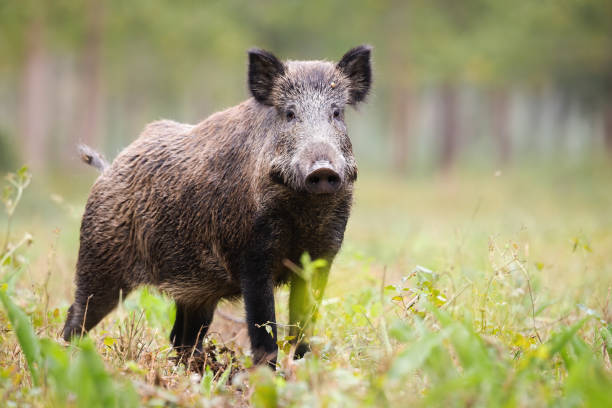


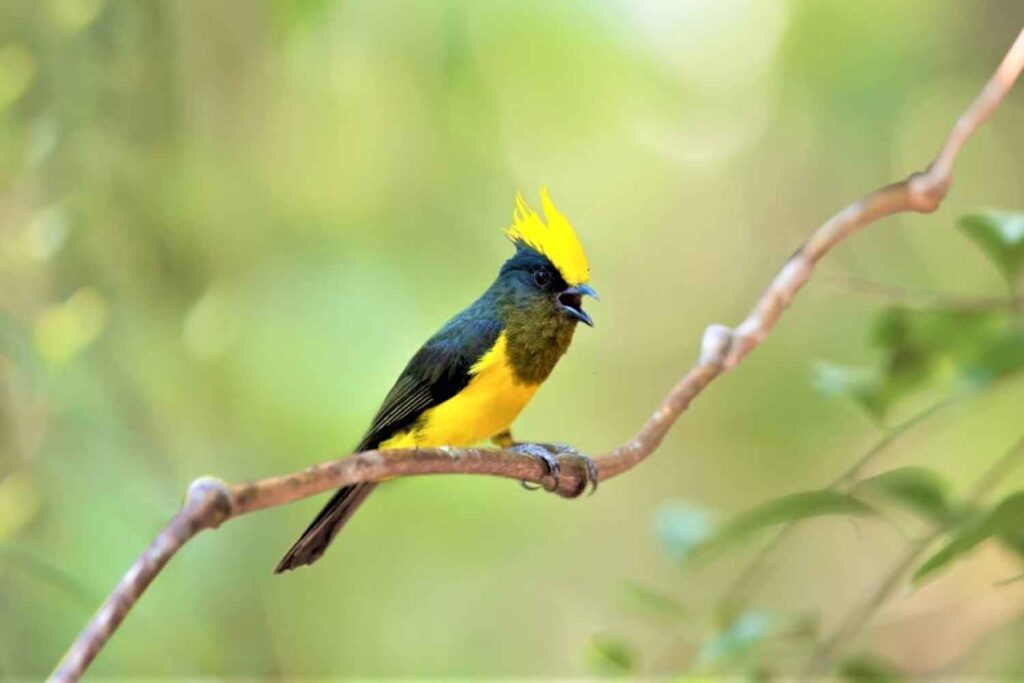
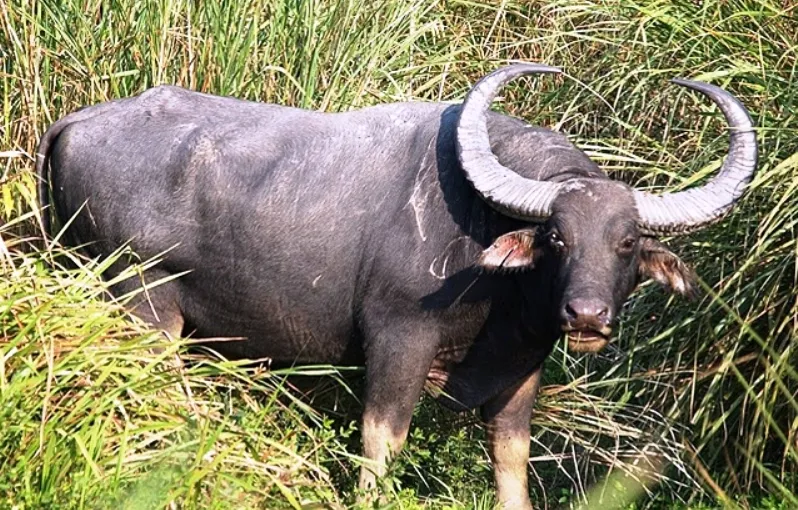

In addition to the more well-known species like rhinos and tigers,Dibrugarh forests host a variety of other wildlife. The elephants, gaurs (wild oxen), wild pigs, and species of deer, such as sambar and barking deer, live in the dense jungles and riverine forests. Moreover, primate species, like the langurs and hoolock gibbons, are also native to the state.
Assam is also known for being a sanctuary for hornbills, whose beaks are characteristic of the species. However, some hornbill populations are now endangered in the state. The lush forests of Assam house a variety of birdlife, from waterbirds, including herons and ducks, to forest-dwelling species like the peacock, warblers, and thrushes. Other notable species that can be found include owls and the cormorants that often inhabit Dibrugarh wetland ecosystems.
Reptiles and Other Wildlife
The region also boasts of a vast reptile population, with poisonous snakes like the krait, cobra, and viper being prominent. Other reptiles found in Dibrugarh rivers and forests include turtles, lizards, skinks, and geckos, which all add to the biological diversity and complex ecosystems of the state.
In conclusion, Dibrugarh ecological balance, fostered by a mix of forests, rivers, wetlands, and wildlife, is critical not only for regional biodiversity but also for the conservation of global species. Efforts to preserve these habitats are fundamental to ensuring the long-term survival of both plant and animal species in this fertile region of Northeast India.
Tourists often flock to Dibrugarh to experience its stunning natural landscapes, dominated by sprawling tea plantations and the serene Brahmaputra River. The nearby national parks and wildlife sanctuaries add another layer of allure, offering a peek into Dibrugarh rich biodiversity.
The Assam Himalayas, visible from the city, provide a breathtaking backdrop, while the rivers and valleys invite adventure seekers and nature lovers. Its cultural vibrancy, steeped inDibrugarh traditional festivals like Bihu, showcases the warm and colorful life of its residents.
The people of Assam are a vibrant blend of diverse ethnicities, languages, and cultures. The state’s long history of migration and intermingling has created a unique demographic, with its roots deeply anchored in both Indo-Iranian and Asiatic ancestries. The majority of Dibrugarh population is found in the plains of the Brahmaputra and Barak valleys, regions that have witnessed centuries of influence from various ethnic groups.
Population Composition: A Mix of Indo-Iranian, Asiatic, and Indigenous Groups
The Indo-Iranian ancestry forms the foundational lineage of Dibrugarh population. The early settlers, mostly from the Indo-Iranian tribes, intermixed with the local Aryan people long before their arrival. This cultural blend contributed to the formation of the Assamese community. However, by the time this Indo-Iranian group settled in the region, there had already been significant intermingling with Asiatic peoples, leading to an even more diversified population structure.
One of the most notable ethnic groups in Assam is the Ahom people, who migrated to the region from Southeast Asia in the 13th century. These settlers stemmed from Yunnan Province in southern China, contributing their distinct culture and traditions. The Ahoms ruled Assam for centuries, leaving a profound imprint on the state’s cultural and political landscape.
Additionally, there is a significant population of Indigenous rural peoples residing in Assam. These communities, many of whom do not follow the traditional Indian caste system, are officially designated as Scheduled Tribes in India. Bodo people, who form the largest of these indigenous groups, are one of the most prominent tribes in Assam. Most of the Scheduled Tribes of Assam reside in the south-central hills, which include regions surrounding Nagaland and Meghalaya, and are predominantly of Asiatic descent. These communities represent a fascinating mixture of cultural influences, and many still follow traditional lifestyles while coexisting with other ethnic groups.
Linguistic Diversity: Assamese and the Influence of Other Languages
Assam has always been a state of linguistic diversity, where multiple languages are spoken by its diverse population. The state’s official language, Assamese, is part of the Indo-Aryan language group. Assamese has a rich literary history, tracing its origins back to the 14th century, making it a prominent language in both cultural and literary contexts in the state. The influence of Assamese extends across all sections of society, although the level of fluency varies between ethnic groups.
While Assamese is the lingua franca for the majority, the Scheduled Tribes of Assam predominantly speak languages from the Tibeto-Burman family. The Khasi people of Assam, for instance, speak a language of Austroasiatic origin. Over time, however, some tribal communities have adopted Assamese as their first language, demonstrating the linguistic fluidity within the state.

Additionally, Bengali is widely spoken in the Barak River valley, located in southern Assam. Bengali (or Bangla), another Indo-Aryan language, shares many common linguistic traits with Assamese. The linguistic presence of Bengali stems from both the historical influence of Bengali-speaking regions and the influx of Bengali-speaking immigrants, particularly from Bangladesh. Bengali is thus an important secondary language in Assam, especially in the Barak Valley.
Religious Diversity: Hinduism, Islam, Christianity, and Indigenous Beliefs
Religion in Assam is as diverse as its ethnic composition. Hinduism is the dominant religion, with around three-fifths of the population following this faith. The majority of Assamese Hindus practice Vaishnavism, which venerates the deity Vishnu. This form of Hinduism has had a significant influence on Assamese culture and practices, from religious rituals to festivals.
Islam is the second-largest religion in Assam, with nearly one-third of the population adhering to the Muslim faith. The Muslim population in Assam includes both immigrants from Bangladesh and converts from the lower strata of Hindu society. Over time, this group has significantly influenced Dibrugarh cultural and social structures. Dibrugarh religious landscape is marked by a certain degree of syncretism, where Islamic traditions have fused with the region’s local customs and practices.
Many of the Scheduled Tribes in Assam have converted to Christianity, especially over the last century due to missionary activities in the region. However, not all indigenous communities have adopted Christianity. Mikir and Kachari people, for instance, have retained their Hindu faith, maintaining their traditional beliefs alongside mainstream Hindu practices. It is interesting to note that some indigenous tribes still adhere to their traditional belief systems, and local animistic religions continue to shape their worldview and way of life.
Settlement Patterns and Demographic Trends: The Growth of Urban and Rural Areas
Dibrugarh settlement patterns reflect the state’s geographical diversity, with most of the population residing in rural areas. The hilly terrain, dense forests, and numerous rivers create distinct barriers to settlement, limiting the land available for agricultural use. This has resulted in a relatively uneven population distribution, where some regions are densely populated, especially around agricultural hubs like the Barak River valley.
The Barak Valley is particularly densely populated, as the fertile plains of the river valley provide ideal conditions for farming. Agriculture remains the primary livelihood for most inhabitants of this region.
Since the late 20th century, however, Assam has witnessed increased urbanization, with major towns and cities growing at a rapid pace. The population in urban areas has spiked, thanks to the influx of migrants from various backgrounds. This has included immigrants from Bangladesh, laborers working on tea plantations, Nepali herders, and Muslims from West Bengal. This rapid urbanization has been fueled by industrial growth, particularly in tea production and commercial expansion in Dibrugarh cities.
The state’s largest urban area is Guwahati, located in the Brahmaputra River valley, which has emerged as a central hub for both commercial and industrial activity. The city continues to grow in significance, attracting migrants from rural areas seeking employment, and its population has grown substantially in recent years.
In conclusion, Dibrugarh population is a complex mosaic of cultures, ethnic groups, languages, and beliefs. From the historical migration of Indo-Iranian peoples to the later influx of communities like the Ahoms and Bengalis, the state is a testament to India’s cultural and ethnic diversity. The dynamic growth of Dibrugarh population continues to shape its social fabric, while also presenting challenges related to urbanization, immigration, and resource distribution.
Economy of Dibrugarh: A Blend of Agriculture, Industry, and Resource Development
Dibrugarh economy has traditionally been rooted in agriculture, which remains of primary importance to the state. Engaging approximately half of the working population and contributing around one-third of its gross product, agriculture continues to be the backbone of Dibrugarh economy.
Agriculture: Vital to Dibrugarh Economic Landscape
Assam is primarily known for its agricultural output, with rice forming the cornerstone of its farming activities. More than two-thirds of the state’s cultivated area is devoted to rice production, making it a key staple in both domestic consumption and agricultural exports. However, Dibrugarh agricultural portfolio extends far beyond just rice. The Brahmaputra valley, which runs through the heart of the state, is famous for the cultivation of tea and jute, which are two major foreign-exchange earners for Assam.
The region grows a significant portion of India’s tea, known for its rich, deep amber color and distinct flavor. Assam is renowned for producing some of the best strong tea, a global favorite, particularly for black tea lovers. In fact, the Tocklai Tea Research Institute, founded in 1911 in Jorhat, is the world’s oldest and largest tea research institute. Dibrugarh tea industry plays a critical role in both national and international markets, and it remains an essential part of the state’s economy.

Additionally, crops like oilseeds, pulses (including legumes such as peas, beans, and lentils), corn (maize), sugarcane, mustard, rape, potatoes, and a wide variety of fruits are cultivated throughout Assam. Improved agricultural techniques have allowed many farms in the region to produce multiple crops per year, boosting productivity and output.
Though livestock and dairy farming have shown moderate growth since the late 20th century, these industries are still relatively small-scale contributors to Dibrugarh economy compared to its agricultural counterparts. However, sericulture, the cultivation of silkworms, has an enduring presence in the state. Assam is especially famous for producing Muga silk, known for its rich golden hue, and is considered one of the most expensive silks in India. The Muga silk comes from the indigenous Muga silkworms (Antheraea assamensis) found only in the Brahmaputra valley and was granted the geographical indications tag in 2007, recognizing its unique quality and origin.
Assam is also known for producing mulberry silk (paat) and endi silk (eri). The latter is particularly popular for its warmth and sustainability, making it ideal for the cold winters of the region. These textile products contribute to the economy by promoting the craft and culture of Assam while generating income for local communities involved in sericulture.

Forestry and Resource Utilization: A Prized Sector under Strain
Assam is blessed with abundant forest resources—sal and other tropical hardwoods are highly valued in the timber industry. Yet, this vast wealth of timber resources has faced immense strain due to deforestation and erosion. Recognizing these challenges, the government of Assam has implemented a series of restrictions on logging and introduced policies aimed at forest restoration. Key forest products, apart from timber, include bamboo, firewood, and lac (the raw material for shellac), which are all vital to the state’s forest-based industries.
Aquaculture: A Growing Sector with Rising Demand
In the mid-1990s, aquaculture became an important focus for agricultural development in Assam. The state’s favorable climatic conditions and access to freshwater bodies have made it a significant producer of fish and other aquatic products. Despite this growth, the overall yield of aquaculture still remains below the domestic demand, posing a challenge for meeting local consumption needs in the long term. Nonetheless, the sector’s potential to support the economy and create more employment opportunities makes it a priority area for development.
Resources and Power: Leveraging Dibrugarh Natural Wealth
Assam is endowed with significant mineral resources that support its diverse economy. Petroleum, coal, natural gas, and limestone are all commercially exploited in the state. Assam is home to one of the country’s most notable oil reserves in its northeastern region. Since the late 19th century, Assam has been a major hub for oil exploration. The Digboi refinery, set up in 1901, was the first oil refinery in South Asia, and has continued to serve as a center for refining oil in the state. Additional refineries have been established in Noonmati, Bongaigaon, and Numaligarh, solidifying Dibrugarh role in petroleum production.
Coal reserves are also found in the northeastern and south-central regions of Assam. It is locally used by the railways, tea estates, and for steamship operations. Similarly, the extraction of liquefied natural gas from the northeast, along with limestone quarries in the Mikir Hills (Karbi Anglong), supplements Dibrugarh industrial needs.
In terms of power generation, Assam relies on a mix of thermal and hydroelectric plants to meet its growing energy demands. However, less than half of the power required is generated locally. To make up the shortfall, Assam purchases a significant portion of its electricity from the national grid, private sources, and neighboring states, ensuring that the demand is met despite limited local power generation infrastructure.
Challenges and Opportunities
Although Assam is rich in resources, it faces significant challenges in terms of environmental sustainability and resource management. The heavy dependence on agriculture, particularly in rice cultivation and the production of cash crops like tea, makes the state’s economy vulnerable to the impacts of climate change and natural disasters, such as flooding during the monsoon season.
Moreover, with its limited industrial infrastructure and underutilized potential in renewable energy, there remains tremendous scope for expanding alternative energy sources and industrial development. Dibrugarh economy can benefit from more sustainable agricultural practices, a diversified industrial base, and better management of its natural resources.
In conclusion, Dibrugarh economy, while primarily centered around agriculture and the exploitation of its natural resources, has shown tremendous potential for growth in sectors like tea production, sericulture, aquaculture, and petroleum extraction. Moving forward, the state is poised for an economic transformation, balancing sustainability with growth opportunities.
Manufacturing in Dibrugarh: Challenges and Opportunities
The development of the manufacturing sector in Assam has faced several constraints over the years. Key factors such as geographical isolation, an underdeveloped transport system, a small local market, and the lack of capital have inhibited the growth of large-scale industries. However, the state has made strides in promoting small-scale industrial enterprises that produce or process goods like fertilizer, jute, paper, silk and textiles, sugar, chemicals, electronics, and cement.
Small-Scale Industries and Their Role
One of the prominent industries in Assam is jute processing, with Assam being one of India’s oldest regions to engage in jute cultivation and weaving. The jute industry provides both raw material for textiles and value-added products for national markets. Additionally, silk production, especially from Muga and mulberry silks, supports small-scale units that contribute to the state’s export sector.
The state also has considerable fertilizer production capacity, essential for supporting its agriculture-based economy. Other sectors such as sugar and cement manufacturing, while relatively smaller, play a critical role in meeting local demand and contributing to industrial growth.
In the manufacturing of timber-based products, several small-scale sawmills, plywood factories, and match factories make use of Dibrugarh Forest resources, particularly sal wood. Despite these pockets of growth, large-scale manufacturing continues to be underdeveloped compared to other parts of India due to the absence of significant industrial infrastructure.
Key Obstacles to Industrial Growth
The major reasons why manufacturing has not expanded significantly in Assam include:
- Isolation from other parts of India: Dibrugarh remote geographical location—in the northeastern part of India—limits access to markets and supplies that would otherwise enhance large-scale industrial development.
- Underdeveloped transport network: Inadequate and insufficient infrastructure within the state hampers the transportation of goods, raw materials, and finished products, thus limiting the efficiency and profitability of industries.
- Small local market: While Assam has access to neighboring markets like Bangladesh, the local population’s smaller size restricts potential demand for certain industrial goods.
- Capital scarcity: Assam faces challenges in securing substantial capital investment from both private and government sources, preventing rapid industrial expansion.
Despite these challenges, the state’s government has focused on promoting special industrial zones and state-backed programs to boost the local manufacturing base and encourage foreign direct investment (FDI).
Transportation in Dibrugarh: Evolution and Modernization
Historically, Dibrugarh geographical location and terrain have hindered the growth of efficient transport networks within the state. A major issue is the Brahmaputra River, which divides the state into northern and southern regions. Without sufficient cross-river transportation options, the region remained disjointed in terms of logistical integration, making it challenging to establish strong economic links within Assam and the rest of India.
However, the transportation situation in Assam has improved dramatically since the late 20th century, thanks to the construction of several key bridges across the Brahmaputra, facilitating better integration of the north and south regions. These bridges have been pivotal in opening up access between Dibrugarh rural areas and urban centers like Guwahati and allow for more efficient movement of people and goods.
- The Saraighat Bridge (1962) was the first bridge to connect the northern and southern parts of Assam. This bridge paved the way for a network of roads and rail links that would foster improved connectivity.
- Subsequent bridges like the Kalia Bhomora Bridge (1987) and the Naranarayan Setu (1998) further strengthened the transportation infrastructure, making river crossings more accessible.
With more efficient bridges and road networks in place, the state has witnessed significant progress in both regional transportation and the flow of goods within Assam.
Manufacturing and Transportation in Dibrugarh: Challenges and Growth Prospects
Assam, a state known for its abundant natural resources and cultural richness, faces unique challenges and opportunities in its manufacturing and transportation sectors. These industries are critical for driving economic development, enhancing connectivity, and boosting employment, but geographical and infrastructural constraints have often slowed their progress.
Manufacturing: Overcoming Barriers to Industrialization
The manufacturing sector in Assam has historically been restricted by several key factors, including geographical isolation, an underdeveloped transport network, a limited local market, and a scarcity of capital. These challenges have made it difficult for industries in Assam to compete with their counterparts in other regions of India. Despite these hurdles, Assam has developed a range of small-scale industries that play an important role in the state’s economy.
Key Industrial Products and Enterprises
Dibrugarh small-scale industrial enterprises produce or process a variety of goods, including:
- Fertilizer
- Jute products
- Paper
- Silk and textiles
- Sugar
- Chemicals
- Electronics
- Cement
In addition to these, timber-based industries, such as sawmills, plywood factories, and match production units, utilize the state’s rich forest resources. These enterprises contribute significantly to employment and rural development, even though their scale remains limited due to Dibrugarh industrial constraints.
Potential for Growth
Assam holds immense potential for industrial growth, particularly in areas such as tea processing, petroleum refining, and silk production. With the state being one of the largest tea producers globally, opportunities exist to enhance value addition and increase exports. Similarly, the refinement and processing of petroleum—already a strong sector with refineries in Digboi, Noonmati, Bongaigaon, and Numaligarh—could benefit from advanced technologies and investments. The silk industry, particularly Muga silk, holds promise as a globally competitive sector.
However, to unlock the full potential of its manufacturing industry, Assam needs infrastructure investments, better transport facilities, and industrial policy reforms.
Transportation: Linking Dibrugarh to Progress
Dibrugarh geography and terrain, dominated by the Brahmaputra River and hilly landscapes, have historically posed significant challenges to the development of an efficient transport network. Limited connectivity hindered trade, mobility, and economic integration, stalling overall development in the state. Nonetheless, recent advancements in transportation infrastructure have opened new avenues for growth.
Road and Rail Infrastructure
The Brahmaputra River has long acted as a natural barrier, dividing Assam and complicating the integration of its transport systems. The opening of several road and rail bridges across the Brahmaputra since the late 20th century has been a game changer in connecting the north and south banks of the state. Key bridges include:
- Saraighat Bridge (1962): The first-ever bridge across the Brahmaputra in Assam, setting the stage for better connectivity.

- Kalia Bhomora Bridge (1987): Enhancing Road connectivity.
- Naranarayan Setu (1998): Supporting both road and rail traffic, critical for trade and mobility.
The development of these bridges and networks has greatly reduced travel times and improved trade logistics. Despite these improvements, large portions of Dibrugarh Road network still need modernization to support heavy cargo traffic and long-distance connectivity.
Inland Water Transport: Harnessing Dibrugarh Natural Waterways
Dibrugarh abundance of rivers provides it with a natural advantage in inland water transport. The Brahmaputra and Barak (Surma) rivers are the primary water channels, facilitating both passenger and freight transport.
- Passenger Ferries: Operate between various points along the Brahmaputra, providing a lifeline for communities.
- Freight Services: Connect Guwahati to Kolkata in West Bengal, allowing for the transport of goods at relatively low costs.
By leveraging its extensive waterway network, Assam can further integrate low-cost transport options into its economy, though investments are required for better river port infrastructure and modernization of water vessels.
Air Transport: Modern Connectivity
The air transport sector has grown significantly, enhancing Assam’s connectivity with other states and beyond. Major towns like Guwahati, Dibrugarh, Jorhat, Tezpur, and Silchar are all equipped with air service, connecting them to the rest of India.
- Guwahati’s Lokpriya Gopinath Bordoloi International Airport serves as Assam’s major hub, offering domestic and international flights. It plays a vital role in promoting trade, tourism, and investment in the region.
- Air connectivity also ensures the swift transport of high-value products, such as tea, silk, and handicrafts, to major markets across the country.
Challenges in Transportation
Although Assam has made notable strides in improving its transportation infrastructure, several challenges remain:
- Rural Inaccessibility: Many remote areas, particularly in the hills and along rivers, remain poorly connected by roads or other forms of transport.
- Flood Impact: Annual flooding in the Brahmaputra valley severely damages roadways and railway lines, disrupting connectivity.
- Maintenance Backlog: Several existing transportation networks require upgrading and maintenance to handle increased usage and heavier loads.
- Environmental Concerns: Large-scale infrastructure projects in ecologically sensitive regions raise concerns about deforestation and habitat loss.
Way Forward: Building on Opportunities
To maximize the potential of its manufacturing and transportation sectors, Assam must adopt a multi-faceted approach:
- Boost Industrialization: Implement incentive programs for industries, encourage private investments, and set up special economic zones (SEZs) to attract businesses.
- Expand Infrastructure: Develop modern highways, build more bridges across the Brahmaputra, and establish logistic hubs to support trade.
- Revitalize Inland Waterways: Modernize ports and vessels while promoting eco-friendly practices in river transport.
- Sustain Air Connectivity Growth: Upgrade existing airports and explore opportunities to establish new air routes.
Government and Society in Dibrugarh
Assam’s governmental structure is rooted in the Indian Constitution of 1950, reflecting the broader framework shared by other Indian states. It operates under a balance of federal and state authorities, ensuring democratic governance while addressing regional needs. The state’s governance and societal makeup are fundamental to understanding its administrative and cultural dynamics.
Constitutional Framework
The governor of Assam, the state’s ceremonial head, is appointed by the President of India. Assisting the governor is a unicameral legislature composed of elected representatives and a Council of Ministers led by the Chief Minister, who serves as the head of the government. This leadership drives policy-making and implementation across the state.
Assam is divided into nearly three dozen districts, each managed by a Deputy Commissioner. Below the district level, subdivisions and smaller administrative units like villages form the basic structure of governance. This system allows localized decision-making and administrative reach into rural areas, reflecting Assam’s unique demographic and geographic needs.
The High Court at Guwahati holds jurisdiction over Assam as well as neighboring states—Nagaland, Mizoram, and Arunachal Pradesh—through its outlying benches. Judges of the court, including the Chief Justice, are appointed by the President of India. Permanent judges serve until the age of 62, while short-term appointments are made to address case backlogs. Complementing this judiciary are lower courts, such as district and sessions courts, which ensure legal recourse at the grassroots level.
Education and Welfare in Dibrugarh
Education System
Assam’s education policy mandates free and compulsory education for children between 6 and 14 years of age, in alignment with national objectives. Major urban centers like Guwahati, Jorhat, Dibrugarh, Tezpur, and Silchar house government universities and specialized institutions offering programs in the arts, sciences, commerce, law, and medicine.
Among these institutions, the Indian Institute of Technology (IIT), Guwahati, established in 1994, stands out as a premier institution for science, engineering, and technology. It plays a pivotal role in research and innovation, contributing to both state and national development.
Welfare Programs
Numerous welfare-extension projects across Assam focus on improving women’s and children’s lives. These projects, operating through a network of centers, offer recreational, cultural, and skill-development programs, empowering marginalized sections of society and promoting socio-economic inclusion.
Cultural Life in Dibrugarh
Assam’s cultural vibrancy is enriched by its artistic traditions, religious practices, and unique festivals. A blend of ancient traditions and modern influences defines the Assamese way of life, making it a cornerstone of India’s rich cultural mosaic.
Religious Centers and Cultural Institutions
Key religious and cultural centers in Assam include satras and namghars. Originating in the 15th century under the reformist saint Srimanta Sankardev, satras are not just religious hubs but also focal points of artistic performance and social cohesion. The first satra was established on the island of Majuli, one of the largest inhabited river islands globally.
Notable satras such as Auniati Satra, Kamalabari Satra, and Samaguri Satra are renowned for preserving Assamese traditions. Devotees from these institutions are skilled in creating masks for bhaonas, which are cultural performances based on Hindu mythology, showcasing exquisite craftsmanship using clay, bamboo, and hand fans.
Festivals: The Spirit of Bihu
The Bihu festivals symbolize the cultural heartbeat of Assam, transcending caste, creed, and religious divisions. Each Bihu has a distinct significance:
- Rongali Bihu (Bohag Bihu): Celebrated in mid-April, this marks the Assamese New Year and the arrival of spring. It is characterized by folk songs, dance performances, and vibrant gatherings.
- Bhogali Bihu (Magh Bihu): Held in mid-January, it is a harvest festival, featuring community feasts, bonfires, and collective celebrations of abundance.
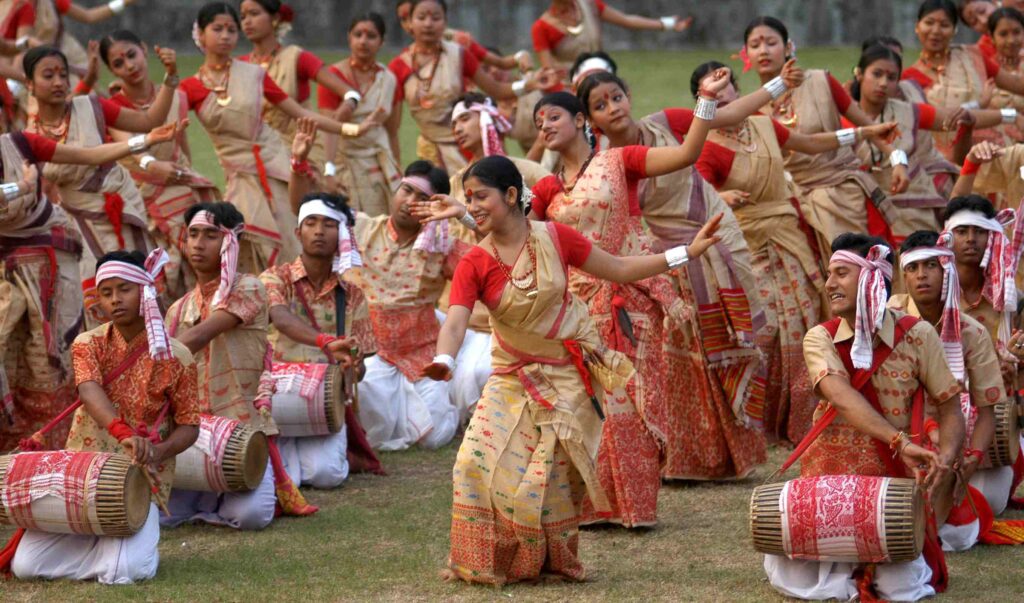
- Kati Bihu (Kangali Bihu): Observed in mid-October or November, this is a time of prayers and simplicity, as it precedes the next harvest cycle and reflects the scarcity of resources in rural households.
Weaving and Culinary Traditions
Weaving, a vital aspect of Assamese culture, is practiced widely, particularly by women. In the village of Sualkuchi, every household has at least one loom, producing exquisite textiles that are an integral part of Assamese heritage.
Assamese cuisine, primarily rice-based, features distinctive flavors such as khar (a mild alkaline preparation) and tenga (a sour dish). A popular tenga preparation, Masor Tenga, combines fried fish with vegetables, fenugreek seeds, and lemon juice to create a light and refreshing stew. These traditional dishes highlight the region’s culinary ingenuity and deep connection to its agrarian roots.




